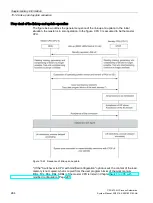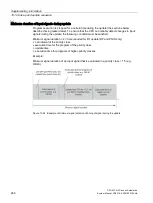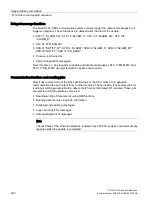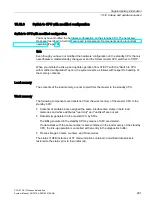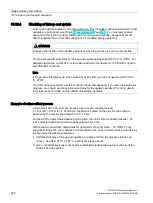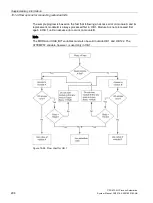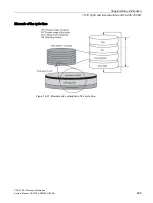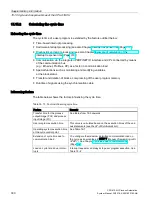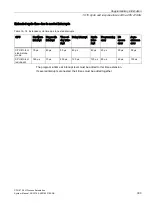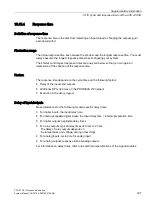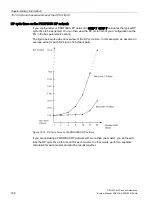
Supplementary information
15.13 The user program
CPU 410-5H Process Automation
System Manual, 09/2014, A5E31622160-AB
293
15.13
The user program
The rules of developing and programming the user program for the standard S7-400 system
also apply to the S7-400H.
In terms of user program execution, the S7-400H behaves in the same manner as a
standard system. The synchronization functions are integrated in the operating system and
are executed automatically in the background. You do not need to consider these functions
in your user program.
In redundant operation, the user programs are stored identically on both CPUs and are
executed in event-synchronous mode.
However, we offer you several specific blocks for optimizing your user program, e.g., in order
to improve its response to the extension of cycle times due to updates.
Specific blocks for S7–400H
In addition to the blocks that can be used both in S7-400 and in S7-400H, there are
additional blocks for S7-400H. You can use these blocks to influence redundancy functions.
You can react to redundancy errors of the S7-400H using the following organization blocks:
●
OB 70, I/O redundancy errors
●
OB 72, CPU redundancy errors
SFC 90 "H_CTRL" can be used to influence fault-tolerant systems as follows:
●
You can disable interfacing in the master CPU.
●
You can disable updating in the master CPU.
●
You can remove, resume or immediately start a test component of the cyclic self-test.
●
You can execute a programmed master-standby changeover. The following changeovers
are possible:
–
The current standby CPU becomes the master CPU.
–
The CPU in rack 0 becomes a master CPU.
–
The CPU in rack 1 becomes a master CPU.
Additional information
For detailed information on programming the blocks described above, refer to the STEP 7
Online Help.






